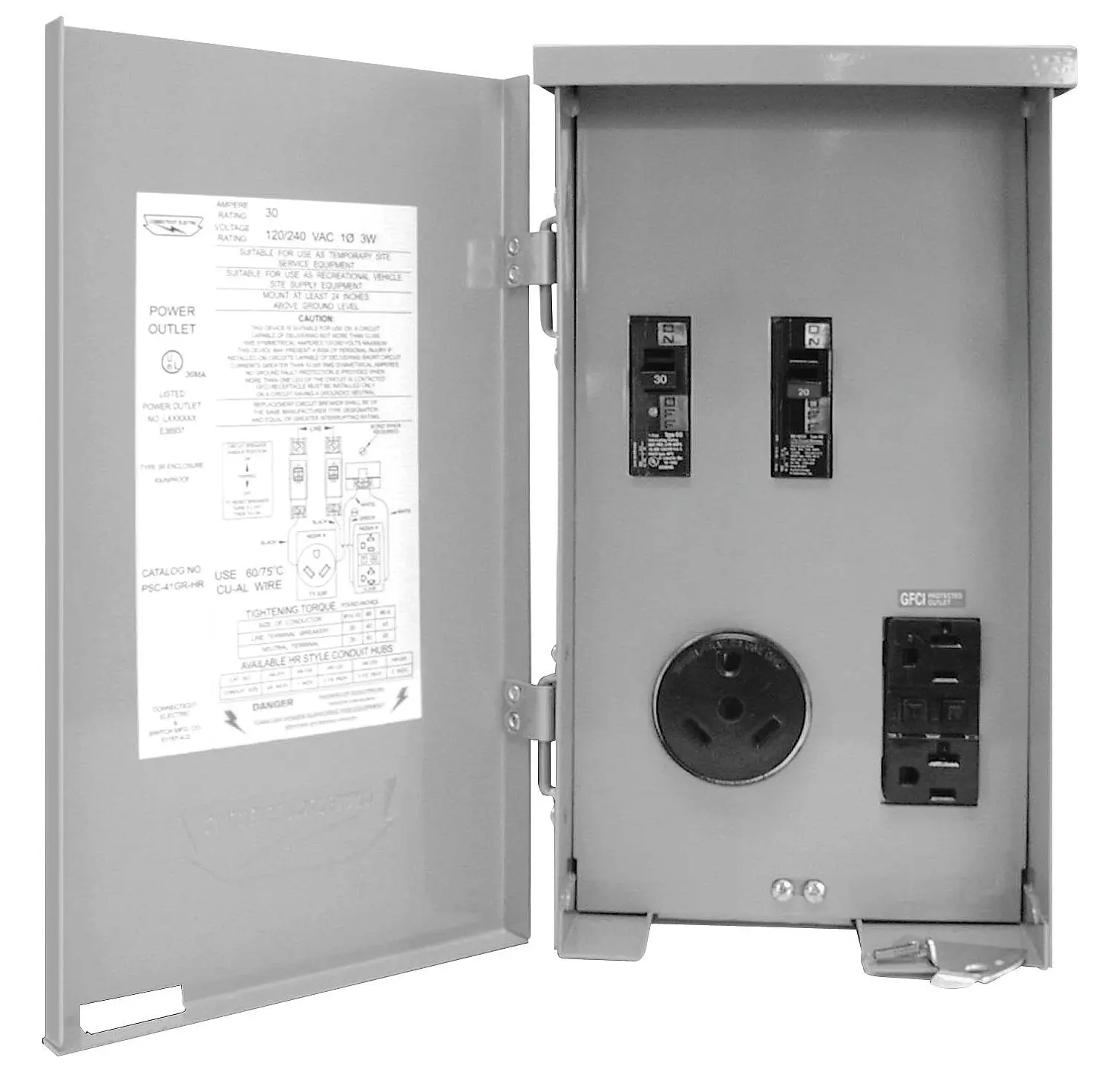


However, not all shore power pedestals offer 50-amp power supplies.

It’s enough to melt the rubber and insulative properties of the plug. Arcing is when power jumps from one connection to the other, reaching up to 35,000☏ temperature instantly. If you can’t locate the main breaker, flip the main breaker off on your RV’s panel. Don’t risk melting the insulation on your power cord lines or deep frying the electrical systems in your RV because you like to live on the edge.īe sure to flip the main breaker off at the shore power pedestal. First and foremost, purchasing a surge protector is an absolute must. Plugging your 50-amp RV into a campsite electric utility is multifaceted, depending on where you are and what’s available.
#30 amp 120 volt outlet how to
How to Plug in a 50-Amp RV to a Campsite Electric Utility The general rule of thumb is that you can draw 80% continuous power (40-amps per circuit), though it’s probably not the best idea to have everything in your RV running all at once. You’re on a single circuit in most cases, and too much power draw can trip the breaker. When it comes to 30-amp RVs, you have to be more careful about what’s running at the same time. Worst case scenario, you can run two A/C units in a three-unit RV while running other appliances. Two or three A/C units draw a lot of amps, but a 50-amp RV is designed to spread out and handle the extra load. Due to factors like a weak breaker, inadequate protection systems, or a ground fault, if you consume a continuous power load of around 40 to 45-amps on a single breaker, it’s likely to trip. Instead, envision it as 80 amps divided into two 40-amp sections. This means there will be two circuit breakers which, in theory, should supply 50-amps to both of your hot power feeds. The shore power VAC service that accepts a 50-amp plug is a 50-amp split phase 120/240 VAC system. The thing is, even a 50-amp RV requires a level of restraint. That’s 12 kilowatts per hour if you max out your usage, which is hard to do without tripping the breakers. How Much Electricity Does a 50-Amp RV Use?Ī 50-amp RV has the potential to use up to 12,000 watts. Two circuit breakers combine for 240V and quite a lot of power. Once you break it down like that, it’s a lot simpler than it sounds in the beginning. Two of them on one side would trip the circuit breakers on that side. A single A/C unit in an RV typically consumes 15 amps. It doesn’t make sense to put two A/C units on one circuit breaker. This divides your power-hungry appliances up so they aren’t all drawing on a single circuit. As mentioned above, you’ll see two circuits when you’re plugging in a 50-amp RV. The 30-amp will only have a single row of circuit breakers, while the 50-amp will have two rows of circuit breakers. Four prongs on the male end equal a 50-amp plug, while three prongs are for a 30-amp plug. The number of prongs on your plug is an instant identification method. There are a couple of ways to recognize 50-amp versus 30-amp at the circuit breaker. You’re not getting 240V all at once, but two 120V at the same time. How is a 50-Amp RV Service Wired?Ī 50-amp RV service is wired with two power feeds at 120V each, as briefly touched on above, a ground, and a neutral (a total of four prongs). You can still overwhelm a single circuit if you’re not careful, but you should feel very comfortable in a 50-amp RV, running everything you need. It’s a neat and convenient divide on the breaker that keeps you from overloading one circuit by spreading the love around. Devices don’t all run on the same circuit, with one A/C unit on one circuit and the residential refrigerator on the other circuit. That’s because there are two 120V circuits in the breaker. With 50-amps, you can power quite a lot in larger RVs, such as dual A/C units, residential refrigerators, and generally a lot more at once. The two power feeds in a 50-amp RV plug combine for 240V. Is A 50-Amp RV Plug 110 or 220 Volts?Ī 50-amp RV Plug is actually two 120V power feeds for a combination of 240V. On the bright side, that’s what we’re here for-to make the unknowable knowable and walk you through the basics of 50-amp RV plugs. RVs, however, place you in the driver’s seat regarding at least a basic understanding of how 50-amp RV plugs (or 30-amp, for that matter) correlate to 110 or 220 volts. Residential homes are simplified by the fact that you never have to worry too much over your 110 amp power service supplying power to your hair dryer. For instance, 110/220 or 120/240 voltages are so interchangeable in conversations that it’s difficult to know what is what and why.Įver since Nikola Tesla and Thomas Edison got into a tiff over Direct Current and Alternating Current, electricity has been a complicated subject. If you’re new to RV life, a 50-amp RV plug may have some inconsistencies and questions.


 0 kommentar(er)
0 kommentar(er)
